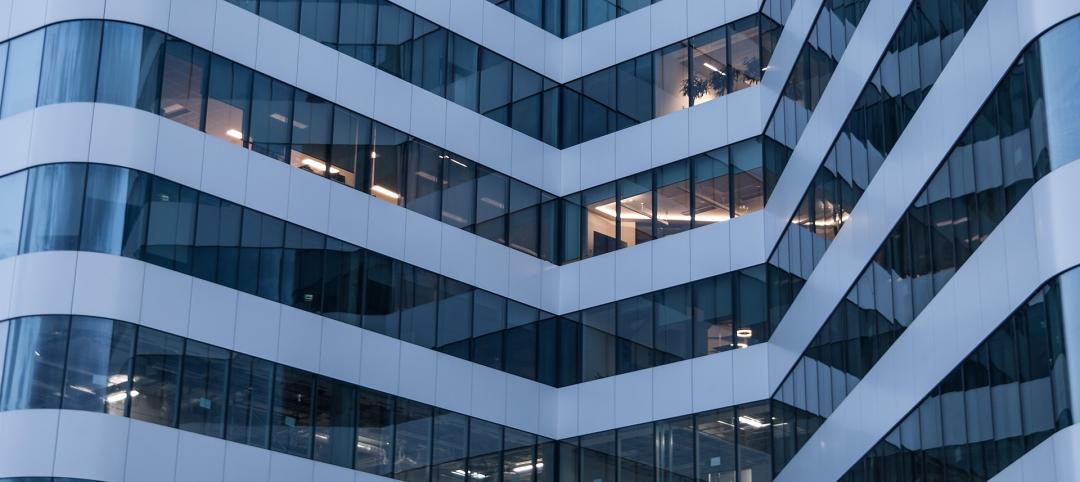Data centers are among the most complex building types, requiring a significant amount of coordination among Building Team members, often with a compressed schedule and in tight spaces. Perhaps no other project type stands to benefit more from coordination using building information modeling and virtual design and construction than data centers.
“Everyone speaks to the benefits of BIM for coordination and clash detection on projects, but when you talk about all of the lines of conduit and other elements that you’re running through what are ultimately very tight spaces, it’s a steroidal environment when you’re talking about a data center,” says Bryant Farland, Senior Vice President and Leader of Skanska’s Mission Critical Center of Excellence. “Coordination becomes just that much more important, therefore, BIM becomes that much more useful.”
Building Design+Construction reached out to several AEC professionals who specialize in data centers to identify the areas of planning, design, and construction where they’re getting the most value out of BIM/VDC coordination. They pinpointed the following:
1. Planning the space
Data centers have huge mechanical and electrical capacities for their footprint—as many as 30 times the typical office building. Furthermore, the equipment is typically concentrated outside the server halls to reduce risk to the IT equipment. Together, these factors create incredibly dense equipment spaces and major duct, pipe, and conduit distribution paths, says Tom Boysen, Senior Project Manager with Sellen Construction (www.sellen.com).
“BIM helps data center designers confirm that the equipment and distribution can all fit, verify maintenance and service clearances, and analyze pressure drop and voltage drop with the actual routing,” says Boysen, who leads Sellen’s data center work. “Underground electrical feeders can be so dense that they could overheat and melt down if not designed properly. BIM’s precise routing allows electrical designers to model the heat dissipation and adjust the electrical duct bank configuration accordingly.”
2. Coordinating prefabrication
Data center clients, whether wholesale operators, tech firms, or financial institutions, are pushing the pace of new construction and retrofit projects. Fast track is passé. Uber fast track is the new standard as clients look to get their facilities online sooner.
To help speed construction, AEC firms are prefabricating many of the building systems and components, from the enclosure to the mechanical and electrical systems. BIM/VDC is vital for designing and testing prefabrication concepts with respect to material handling, path of travel, and installation sequence.
“We’re constantly pushing the amount and types of items we fabricate at our facilities,” says Jason Rahn, Group Vice President with The Hill Group (www.hillgrp.com). “This allows us to minimize the amount of fit-up and welding in a field environment, and it allows us to maintain excellent quality assurance due to the majority of our work being built in a controlled, shop atmosphere.”
Rahn points to a recently completed data center that required 450 welds for the piping systems, of which only 20 needed to be performed in the field. “The reduction in field welding required us to have only one welding machine on site,” he says. “It also decreased the field installation time from about 20 working days to just five.”
One prefabrication tip from Rahn: Make sure to include hangers in the BIM model. “It allows us to fabricate all piping supports and hangers en masse, deliver to the site early, and have installation completed prior to piping and ductwork material deliveries.”
3. Managing project phasing
Data center projects are typically phased to avoid building out expensive capacity that is not needed on day one. Often, the initial capacity target shifts during design and construction due to leasing activity and the difficulty of projecting the need for computer power, says Boysen.
“By adding a phasing element to the BIM model, the team can analyze the cost, schedule, and energy consumption at different phase steps,” says Boysen. “BIM supports phasing by quickly allowing the team to modify the design documents, adding or subtracting modules of power and cooling. Then, after the day-one construction is complete, BIM supports future development with an accurate record of the installed condition, allowing the team to plan future deployments with confidence.”
4. Integrating raised-floor layouts
Raised access floors can be especially tricky, says Rahn, because most floor installers do not model their installations—adjustments for structural bridging and support are typically made in the field. Creating a BIM model of the flooring allows the installer to understand where the MEP systems are located in relationship to the pedestal support systems.
“By coordinating and integrating this into the modeling process, flooring installers can see where they need to modify their support framing early in the process and fabricate the necessary bridging and support components to span across the MEP systems where necessary,” says Rahn. “This eliminates the time and effort it would take to do this in the field once the MEP systems are installed, thus decreasing the field installation time.”
5. Keeping the routing free of conflicts
Transmitting the capacity out of the densely packed equipment requires multiple layers of stacked conduit, duct, and piping. Using the model, the detailers can pick up where the designers left off, adding intelligence to the individual elements. “Tight project schedules don’t allow for field routing to solve conflicts, so the routing must be solved during the detailing stage to allow for 99.99% conflict-free installation,” says Boysen.
6. Enabling commissioning and O&M tasks
Data centers require a robust commissioning process to ensure performance and reliability. Commissioning information tags for each piece of equipment and feeder can be added to the BIM model to keep a live database of commissioning process status.
“As with any new facility construction, the information that is so valuable to the operational staff—namely submittals, O&M manuals, as-built plans, balancing reports, and commissioning reports—is sometimes never transmitted to them, and then often lost over the years as the personnel turn over,” says Boysen.
When this information is inserted into the BIM database, the information can be retained and viewed for each piece of equipment, rather than in separate volumes. “Whether they are facing a problem or trying to improve energy efficiency, data center operators would benefit from a comprehensive set of information,” he says.
7. Analyzing air flow
By incorporating computational fluid dynamic (CFD) simulations into the BIM model, engineers can evaluate and fine tune server layouts based on the thermal modeling. “By incorporating that process into the Revit model, we’re able to visualize how the air will flow inside the data center and see the temperature variation based on the height and how the air is moving,” says Luis Cetrangolo, AIA, Associate at Integrated Design Group (www.idgroupae.com). “It’s especially helpful in being able to see how the servers in a computer room receive cold air and how hot air is removed.”
Cetrangolo says the CFD modeling is used more as a verification of engineering calculations than as a design tool. “It’s really a fine-tuning process.”
We want your ideas! This topic will be an ongoing series on BDCnetwork.com. If you have ideas for how BIM/VDC coordination benefits data center projects, please send them to dbarista@sgcmail.com.
Related Stories
Cultural Facilities | Aug 21, 2024
Baltimore’s National Aquarium opens 10,000-sf floating wetland that mimics the harbor’s original tidal marsh habitat
The National Aquarium in Baltimore has opened the National Aquarium Harbor Wetland, a 10,000-sf floating wetland that mimics the Inner Harbor’s original Chesapeake Bay tidal marsh habitat. Located between Piers 3 and 4 on Baltimore’s Inner Harbor, the $14 million project features more than 32,000 native shrubs and marsh grasses.
Mixed-Use | Aug 21, 2024
Adaptive reuse of a Sears store becomes luxury mixed-use housing
6 Corners Lofts at 4714 W Irving Park Road, Chicago, Ill., opened in March of 2024 as a 394,000-sf adaptive reuse project born out of a former Sears store.
Building Materials | Aug 19, 2024
Federal 'buy clean' construction materials label program unveiled
The U.S. Environmental Protection Agency announced a plan for implementing a new label program to boost American production of more climate-friendly construction materials and products. The label program will prioritize steel, glass, asphalt and concrete.
Museums | Aug 19, 2024
The Tampa Museum of Art will soon undergo a $110 million expansion
In Tampa, Fla., the Tampa Museum of Art will soon undergo a 77,904-sf Centennial Expansion project. The museum plans to reach its $110 million fundraising goal by late 2024 or early 2025 and then break ground. Designed by Weiss/Manfredi, and with construction manager The Beck Group, the expansion will redefine the museum’s surrounding site.
AEC Tech | Aug 19, 2024
Harnessing AI to revolutionize architectural design and creativity
Architects are wondering if AI will replace us. For Vessel, the gains offset the fear. We believe there is wisdom in the unattributed quote, “You won’t lose your job to AI. You will lose your job to someone using AI.”
Reconstruction & Renovation | Aug 19, 2024
Movement to protect historic buildings raises sharp criticism
While the movement to preserve historic buildings has widespread support, it also has some sharp critics with well-funded opposition groups springing up in recent years. Some opponents are linked to the Stand Together Foundation, founded and bankrolled by the Koch family’s conservative philanthropic organization, according to a column in Governing magazine.
Government Buildings | Aug 19, 2024
GSA posts new RFI for enabling energy efficiency, decarbonization in commercial buildings
The U.S. General Services Administration (GSA), in collaboration with the U.S. Department of Energy, recently released a new Request For Information (RFI) focused on enabling energy efficiency and decarbonization in commercial buildings. GSA wants to test innovative technologies through GSA’s Center for Emerging Building Technologies.
MFPRO+ New Projects | Aug 16, 2024
At 60 stories, the Paramount multifamily development will stand as Nashville’s tallest high rise
When complete, the 60-story Paramount building, at 750 feet high, will be the tallest high rise tower in Nashville, Tenn., surpassing the city’s current record holder, the 617-foot AT&T Building. The $390 million Paramount project recently launched condo sales after securing more than $230 million in construction financing.
Urban Planning | Aug 15, 2024
New York City begins first large-scale porous pavement installation
New York City is installing its first large-scale porous pavement installation along seven miles of roadway in Brooklyn. The project will keep 35 million gallons of stormwater out of the combined sewer system each year, according to a news release.
Urban Planning | Aug 15, 2024
The magic of L.A.’s Melrose Mile
Great streets are generally not initially curated or willed into being. Rather, they emerge organically from unintentional synergies of commercial, business, cultural and economic drivers. L.A.’s Melrose Avenue is a prime example.
















